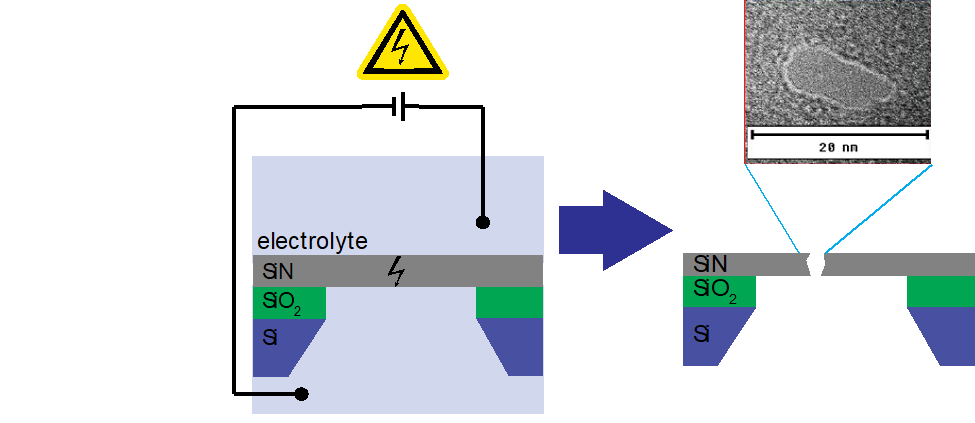Solid-state nanopores are widely used in single-molecule sensing applications, such as DNA sequencing and protein detection. One method to create these nanopores is dielectric breakdown, where a high electric field is applied across an insulating membrane (such as SiN), leading to localized dielectric material failure followed by the formation of a nanopore. This technique provides an easy and scalable approach compared to focused ion beam (FIB) or electron beam (e-beam) drilling.
Student will research dielectric breakdown principles, design a high-voltage (10V-20V) circuit for controlled nanopore formation, and build an experimental setup using a suspended membrane in an electrolyte solution. They will then conduct breakdown experiments, record I-V characteristics, and analyze nanopore formation the ionic current through the nanopore.
Appy if you want to experience some simple circuit building, coding and developing sensor systems.


